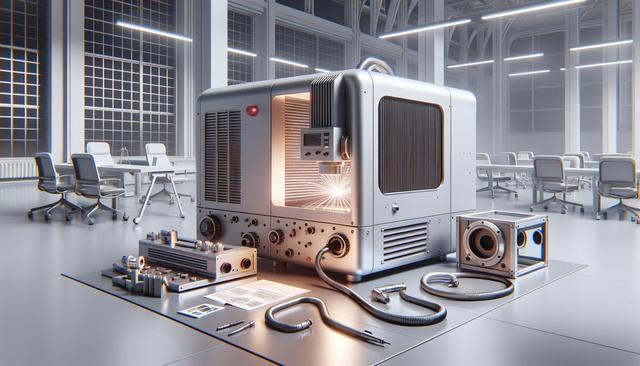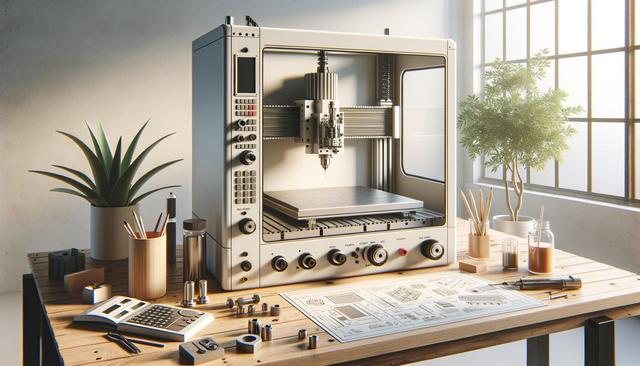Understanding Laser Welding Technology
Laser welding machines use a high-intensity laser beam to join pieces of metal together with exceptional precision. This advanced technique is commonly adopted in industries such as automotive, aerospace, electronics, and medical device manufacturing due to its ability to produce strong and clean welds. The laser beam, which is typically generated by fiber, CO2, or Nd:YAG lasers, melts the materials at the joint, enabling a seamless fusion. Unlike traditional welding methods, laser welding provides a non-contact process, which reduces the risk of contamination and wear on the equipment.
The ability to focus energy with pinpoint accuracy allows for minimal heat input and distortion, making it ideal for applications where tight tolerances are critical. This also means that thinner materials can be joined without compromising their structural integrity. As manufacturing requirements become more demanding, the capability of laser welding to deliver consistent, high-quality results is becoming increasingly valuable.
Key Benefits of Using Laser Welding Machines
Unlock the benefits of laser welding by examining its numerous advantages over conventional methods. These machines offer enhanced precision and speed, leading to higher productivity and lower operational costs over time. Some of the key benefits include:
- Minimal heat-affected zone, reducing material warping and post-processing requirements
- High welding speeds, increasing throughput in production environments
- Clean, high-quality welds that often require no filler materials
- Capability to automate and integrate into robotic systems for consistent and repeatable results
In addition to these technical advantages, laser welding machines also contribute to workplace safety. The controlled nature of the laser beam reduces exposure to hazardous fumes and intense light, which are common in other welding methods. As a result, companies can invest in safer, more efficient manufacturing environments.
Applications Across Diverse Industries
Laser welding machines have become indispensable tools across a wide range of industries. In the automotive sector, they are used for welding body components, batteries, and gear parts. The electronics industry employs laser welding for tasks such as joining delicate wires and micro-components, where traditional welding would be too invasive. In the medical field, laser welding is trusted for assembling devices like surgical instruments and implants, where hygiene and precision are paramount.
Aerospace manufacturers take advantage of laser welding’s ability to create lightweight, high-strength joints that can withstand extreme conditions. The adaptability of this technology makes it suitable for both high-volume production and specialized, low-batch projects. As a result, businesses across multiple sectors are adopting laser welding solutions to improve product quality and operational efficiency.
Factors to Consider When Choosing a Laser Welding Machine
Selecting the right laser welding machine involves evaluating several key factors to ensure it meets your specific manufacturing needs. These include the type of laser source, power output, and compatibility with the materials you intend to weld. For instance, fiber lasers are known for their energy efficiency and are often used for precision tasks, while CO2 lasers may be more suitable for thicker materials.
Additional considerations include:
- Automation capabilities and ease of integration into existing production lines
- Cooling requirements and power consumption
- Availability of training and technical support
- Maintenance needs and long-term durability
Investing time in understanding these factors can help you make a more informed decision and extend the lifespan and utility of your equipment. Consulting with a knowledgeable supplier or technician can also provide valuable insights tailored to your application.
Future Trends and Innovations in Laser Welding
The future of laser welding is marked by continuous innovation and technological advancement. Emerging trends include the integration of artificial intelligence (AI) and machine learning to enhance process control and fault detection. These technologies enable real-time adjustments during the welding process, resulting in even greater consistency and quality assurance.
Another promising development is the use of hybrid welding systems, which combine laser welding with other methods such as arc welding. This approach leverages the strengths of both systems to handle more complex materials and joint configurations. Additionally, advancements in portable and compact laser welding units are making this technology more accessible to small and medium-sized manufacturers.
As digital manufacturing continues to evolve, laser welding machines are expected to play a critical role in smart factories and Industry 4.0 initiatives. The ability to monitor and control welding parameters remotely not only boosts efficiency but also supports predictive maintenance and data-driven decision-making.
Conclusion: Making Laser Welding Work for Your Business
Laser welding machines offer a powerful combination of precision, speed, and adaptability that can significantly enhance modern manufacturing processes. Whether you’re producing intricate electronic components or robust automotive assemblies, this technology provides the flexibility to meet diverse production demands. By understanding the core principles, benefits, and future direction of laser welding, businesses can make informed decisions that align with their operational goals. As the manufacturing landscape continues to evolve, adopting laser welding solutions can be a strategic move toward greater efficiency, quality, and competitiveness.


